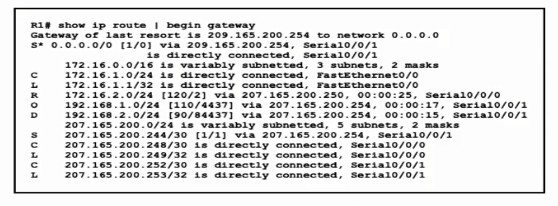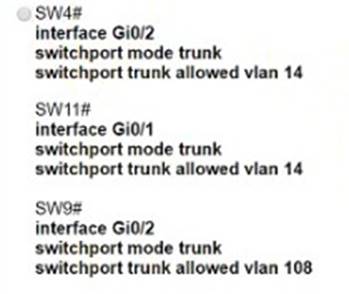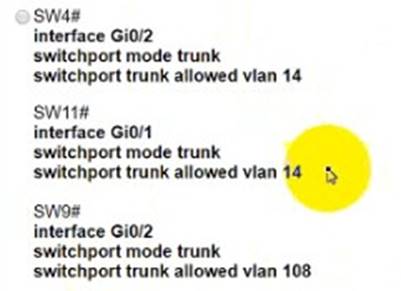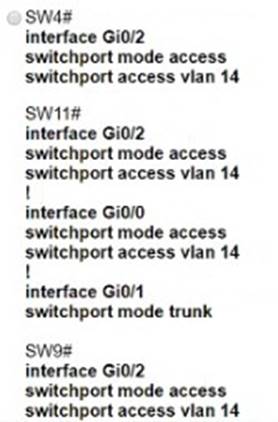- (Topic 2)
Which two values or settings must be entered when configuring a new WLAN in the Cisco Wireless LAN Controller GUI? (Choose two)
Correct Answer:
DE
- (Topic 3)
Refer to the exhibit.
Which network prefix was learned via EIGRP?
Correct Answer:
B
- (Topic 4)
Which REST method updates an object in the Cisco DNA Center Intent API?
Correct Answer:
D
PUT is most-often utilized for **update** capabilities, PUT-ing to a known
resource URI with the request body containing the newly-updated representation of the original resource.However, PUT can also be used to create a resource in the case where the resource ID is chosen by the client instead of by the server. In other words, if the PUT is to a URI that contains the value of a non-existent resource ID. Again, the request body contains a resource representation. Many feel this is convoluted and confusing. Consequently, this method of creation should be used sparingly, if at all.Alternatively, use POST to create new resources and provide the client-defined ID in the body representation—presumably to a URI that doesn’t include the ID of the resource (see POST below).On successful update, return 200 (or 204 if not returning any content in the body) from a PUT. If using PUT for create, return HTTP status 201 on successful creation. A body in the response is optional—providing one consumes more bandwidth. It is not necessary to return a link via a Location header in the creation case since the client already set the resource ID.PUT is not a safe operation, in that it modifies (or creates) state on the server, but it is idempotent. In other words, if you create or update a resource using PUT and then make that same call again, the resource is still there and still has the same state as it did with the first call.If, for instance, calling PUT on a resource increments a counter within the resource, the call is no longer idempotent. Sometimes that happens and it may be enough to document that the call is not idempotent. However, it’s recommended to keep PUT requests idempotent. It is strongly recommended to use POST for non-idempotent requests.Examples:
https://www.restapitutorial.com/lessons/httpmethods.html
- (Topic 4)
What does the implementation of a first-hop redundancy protocol protect against on a network?
Correct Answer:
C
- (Topic 3)
Refer to the exhibit.
The following must be considered:
• SW1 is fully configured for all traffic
• The SW4 and SW9 links to SW1 have been configured
• The SW4 interface Gi0/1 and Gi0/0 on SW9 have been configured
• The remaining switches have had all VLANs adde d to their VLAN database
Which configuration establishes a successful ping from PC2 to PC7 without interruption to traffic flow between other PCs?
A)
B)
C)
D)
Correct Answer:
C